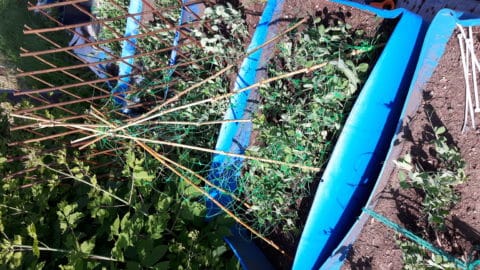While many may believe that agriculture and gardening are best left to rural areas, one project that employs University of Saskatchewan students is working to show that urban gardening is a viable option in Saskatoon.
The askîy project, run by CHEP Good Food Inc., has been working since 2014 to demonstrate how food can be grown in the city and even in potentially contaminated areas. Initially a rooftop garden, the project began using an old gas station located at Station 20 West in Saskatoon as their growing site in the summer of 2015. Project participants use container gardens to grow plants in modified barrels, allowing them to garden without fear of possible contaminants in the food.
The term “askîy” is a Cree word meaning earth and is representative of how the project incorporates Indigenous teachings into the way they grow food. The project also employs interns of Indigenous descent, however everyone is welcome to apply as long as they are a returning student to the U of S.
Kristen Severight-Dumais is one of five urban agriculture interns on the project and a sociology major at the U of S. She explained how Indigenous methods are used by the askîy Project.
“We have some Indigenous traditional food teachings. For example, we have a couple of barrels where we are trying to experiment with something called three sisters and that’s corn, beans and squash. Now, corn, beans and squash will grow fine on their own, but traditionally, when they’re grown in the same area, they just thrive so much better, they work together,” Severight-Dumais said.
In addition to the three sisters method, the project includes medicine wheel teachings and has named its site at Station 20 West “kiscikânis,” the Cree word for garden. Severight-Dumais explained that there are ways students can get involved with askîy without having to apply to be a volunteer.
“If any students are interested in getting some mentorship or volunteer experience, they can come to the askîy project and contact one of us and we’d be happy to help them out,” Severight-Dumais  said.
said.
Severight-Dumais also provided some tips for students and non-students alike who hope to start a garden in the city.
“The one thing I’ve noticed is that gardeners throughout the city [have] a communal thing. It’s very easy to seek out people. Don’t be afraid to ask questions, don’t be afraid to start and don’t be afraid to experiment with different things. A lot of the things that we learnt last summer was through trial and error,” Severight-Dumais said.
She also believes that gardening ties in with university life, as students can save money on their food bills by stocking up on the food they grow in a garden over the summer. Further, Severight-Dumais listed the benefits of eating healthily while attending university.
“I found getting that internship last summer and applying it to my life as a student, it helped enormously. I felt that my marks were better, I felt that I had more energy at the start of the day [and] I felt that I had energy at the end of the day which was nice. I was used to being exhausted for the first year and, to be honest, I didn’t correlate that with my diet and what I was eating,” Severight-Dumais said.
She also stated that since the optimum time to grow food is over the summer, students without summer classes would be best suited to have a garden, as gardening can be a time-consuming activity. However, as Severight-Dumais states, once students overcome the time commitment, gardening can be accomplished in the city, as shown by the askîy project.
“We are growing in probably one of the core neighbourhoods. It just shows that no matter what your gardening experience is, you can grow your own food. Not necessarily for profit but … one of the benefits of growing your own food is that you could make money off of it. Our main goal is to highlight that no matter what experience you have, you can grow your own food and be self sustainable as well.”
—
Jack Thompson / Staff Writer
Photos: Kristen Severight-Dumais / Supplied